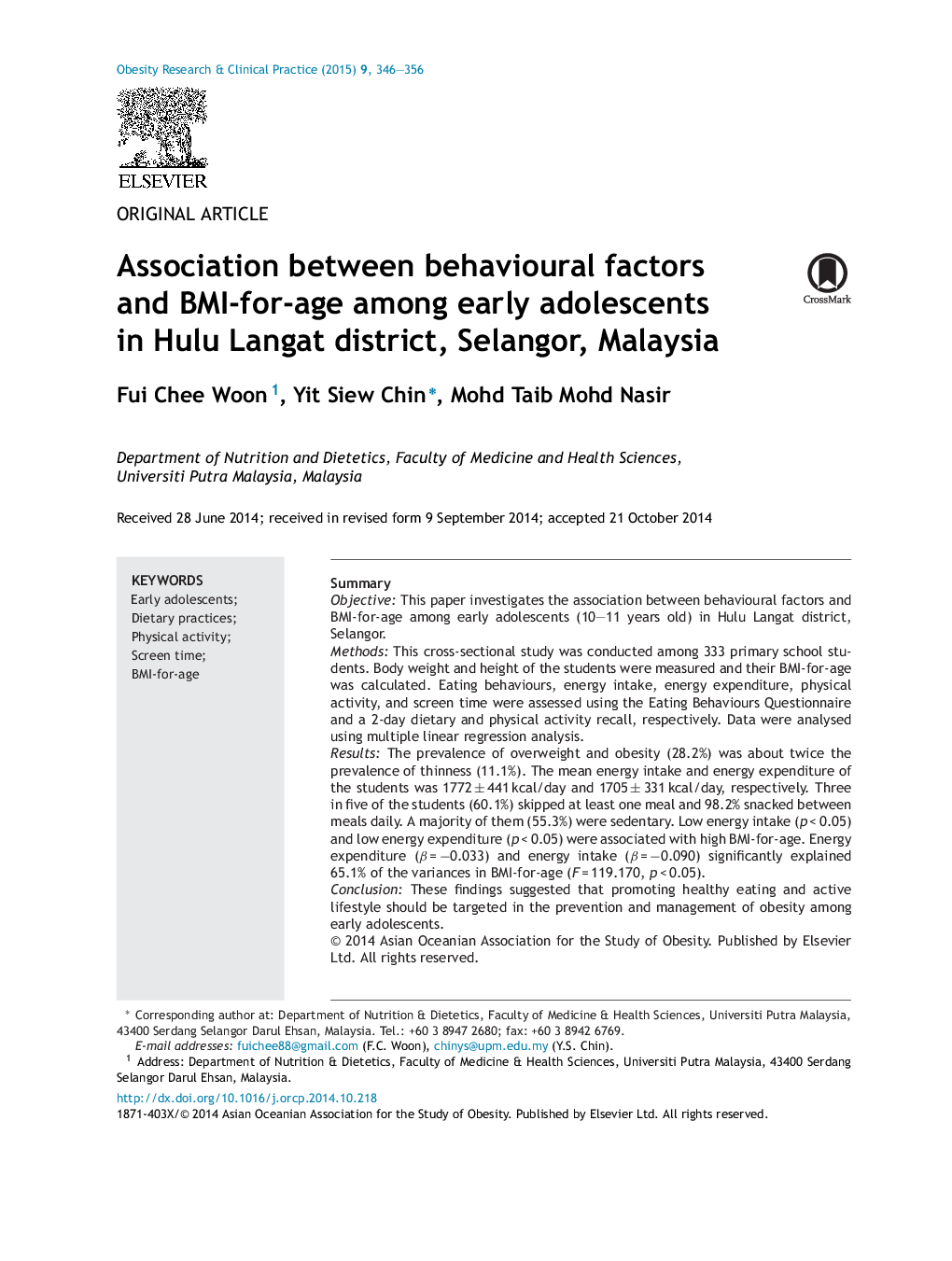| کد مقاله | کد نشریه | سال انتشار | مقاله انگلیسی | نسخه تمام متن |
|---|---|---|---|---|
| 3003608 | 1180812 | 2015 | 11 صفحه PDF | دانلود رایگان |

SummaryObjectiveThis paper investigates the association between behavioural factors and BMI-for-age among early adolescents (10–11 years old) in Hulu Langat district, Selangor.MethodsThis cross-sectional study was conducted among 333 primary school students. Body weight and height of the students were measured and their BMI-for-age was calculated. Eating behaviours, energy intake, energy expenditure, physical activity, and screen time were assessed using the Eating Behaviours Questionnaire and a 2-day dietary and physical activity recall, respectively. Data were analysed using multiple linear regression analysis.ResultsThe prevalence of overweight and obesity (28.2%) was about twice the prevalence of thinness (11.1%). The mean energy intake and energy expenditure of the students was 1772 ± 441 kcal/day and 1705 ± 331 kcal/day, respectively. Three in five of the students (60.1%) skipped at least one meal and 98.2% snacked between meals daily. A majority of them (55.3%) were sedentary. Low energy intake (p < 0.05) and low energy expenditure (p < 0.05) were associated with high BMI-for-age. Energy expenditure (β = −0.033) and energy intake (β = −0.090) significantly explained 65.1% of the variances in BMI-for-age (F = 119.170, p < 0.05).ConclusionThese findings suggested that promoting healthy eating and active lifestyle should be targeted in the prevention and management of obesity among early adolescents.
Journal: Obesity Research & Clinical Practice - Volume 9, Issue 4, July–August 2015, Pages 346–356